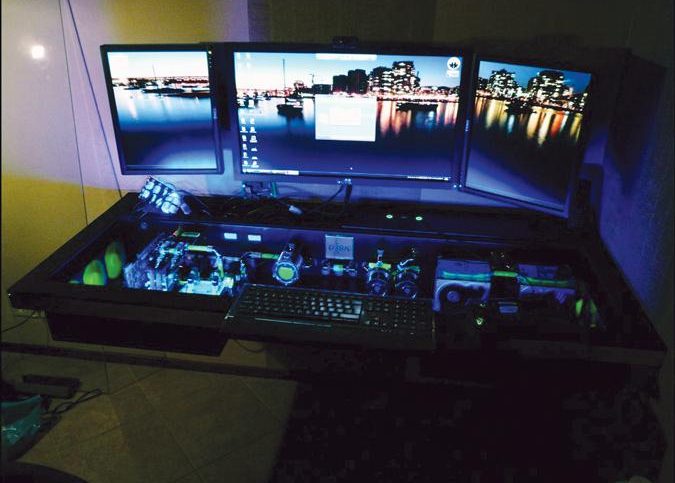By Ashraf Abdalla
Last month I gave you my impressions of the two new next-gen consoles. Both are brilliant machines, but ultimately (and you geeks surely know this), consoles can never compete with a decent PC gaming rig. Even the just released PS4 and Xbox One are using significantly dated technology in comparison to what’s available in the PC world.
Understandably some people want the peace of mind that comes with a console. There’s a lion’s share of ready-built PC gaming rigs available, and many like the simplicity of ‘insert disc’, ‘install’, and ‘play’, without the worry of the daunting task of tweaking settings to maximize graphics and performance based on your PC’s capabilities.
Yet, you can build your own for a fraction of the price if you just follow some basics. PC game hardware detection techniques have dramatically improved and taken out a lot of the guesswork. Kuwait gamers have the additional option of getting it assembled by one of the multitude of workshops in Ibn Khaldoun Street, after you’ve gotten your parts. I strongly advise you do this if you have no clue of how to put it all together or don’t want to spend the time reading one of the many step-by-step guides available on the internet.
Your rig’s components are scalable and will largely depend on your funds. What I intend to do over the next two months is give you a rundown on the importance of each, and where you should put most of your money. As a general rule, always take the time to read online reviews and performance comparisons of the various options within your budget range so you get the most bang for your buck. Keep in mind that you can always upgrade components that you’ve had to make compromises on because of finances when your wallet is a bit more flush with cash.
The two of the most important components in your rig are the CPU and the motherboard. Along with your graphics card, these will determine the performance of your rig with games. I’ve experimented with both AMD and Intel based processors and motherboards in my rigs over the years. Intel processors coupled with a good graphics card always gave me better performance, albeit at a slightly higher price.
You don’t have to go for the fastest and best i7 processor, a mid level core i7 will give you all the performance you need. Processors like Intel’s core i5-4670K which are easily found both locally and online at pretty affordable prices will give you a cost effective alternative without compromising performance. The only difference between it and it’s core i7 brethren is that hyperthreading is disabled. So it won’t perform anywhere near as well when handling multi-threaded workloads. This isn’t much of a concern for a gamer, the only game that I know for certain used hyperthreading was Crysis 3.
If money is no object, I’d recommend going for a mid-range core i7 like the i7-4770K which will bump up your minimum average frame rate, for much smoother gameplay. With an Intel processor always go for those with a K designator at the end which means they are unlocked and will let you easily overclock (run your processor at a higher rate than the manufacturer intended). Make sure you pick up a good CPU cooler whether fan or liquid cooling based for your CPU to increase its life, and avoid any risk of overheating if you do decide later to put your gaming PC on steroids.
A trickier choice to make is which motherboard to get. The greatest deciding factor here is the size of the case that you will be using: mini form factor, mid tower or full size tower. The motherboard is one of those things you don’t want to skimp on. Get a good one and your performance is solid and consistent, go for a less-featured model and it could bottleneck your rig’s performance. Make sure your motherboard’s CPU socket matches your choice of CPU and if you can afford it go for one of the more high-end gaming models (the likes of ASUS’s Republic of Gamer models are available in almost all form factors) and you won’t regret it.
The next component you’re going to need to get is memory, and this is another important one. If you plan on over-clocking you want to get memory that has good quality heatsinks installed. You’re also going to want to make sure you get at least 1600-1800MHZ DDR3 memory. It’s imperative you check which memory your motherboard supports and for any known compatibility issues. For a good gaming rig you’re going to want to get at least 8 GB of RAM. Get as much as you can afford over that once you’ve decided which graphics card you’re going to get (more on that next month). Really anything more than 8GB of RAM is kind of overkill.
Join me again next month when I’ll take you through the single most important, and expensive, decision: the graphics card. We’ll also cover power supplies, hard drives, monitors and peripherals, and soon you will have your own custom made gaming PC!
Click here for part two of our series The Best Gaming Experience.








